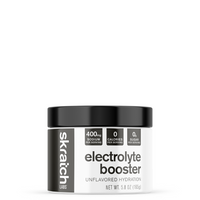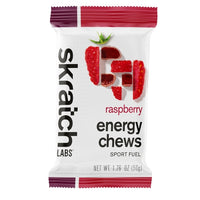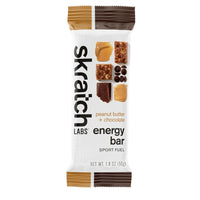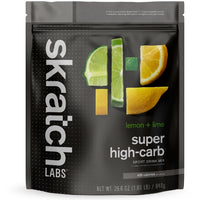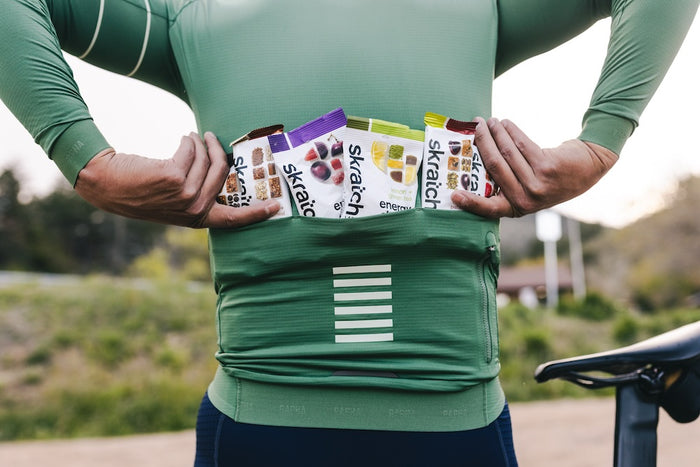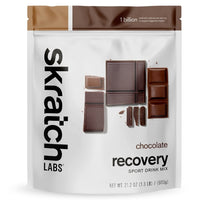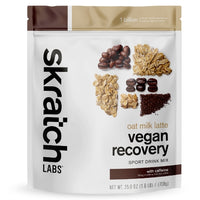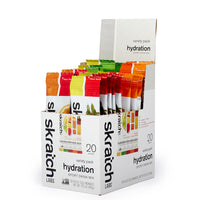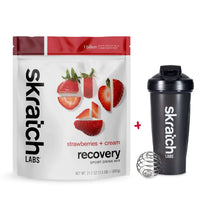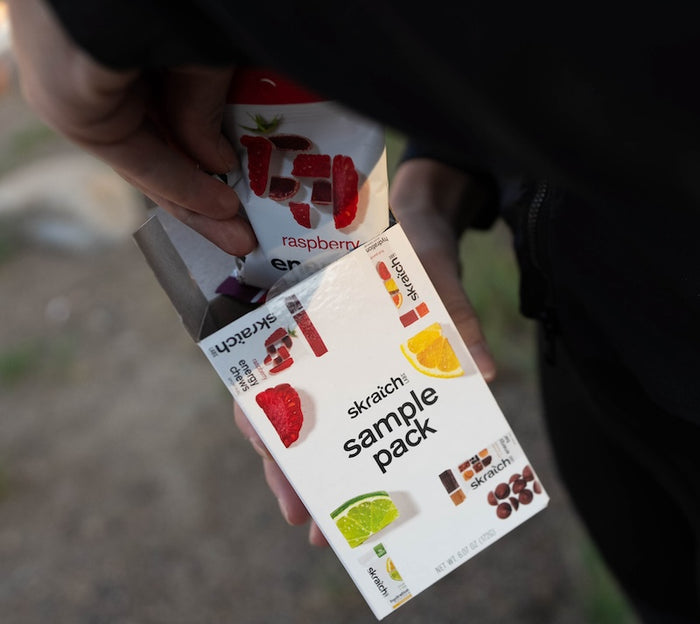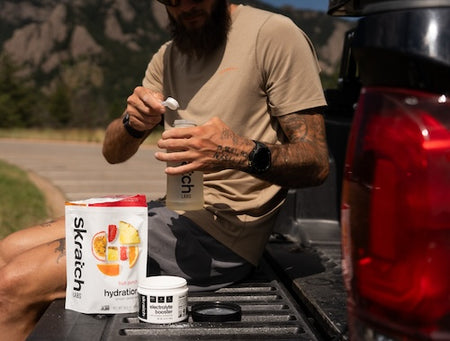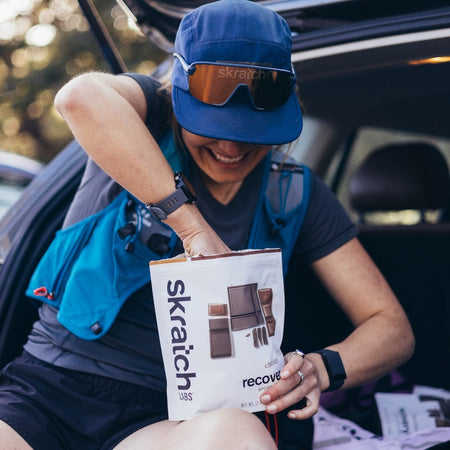Winter doesn’t just bring snow, it brings a whole new layer of challenges for endurance athletes. Whether you're chasing powder, logging frosty miles, or grinding out a trail run in sub-freezing temps, the cold drains your energy, your hydration, and your motivation.
But with the right fueling plan, you can stay warm, hydrated, and primed to perform. Here's your no-BS guide to staying powered up all winter long.
Why Cold Weather Wrecks Your Fuel Reserves (and What to Do About It)
In the cold, your body is in survival mode. You're not just fueling your workout, you're fueling your internal furnace.
Here’s what’s happening under the hood:
- You burn more carbs. Cold triggers your sympathetic nervous system (your “fight or flight” switch), which increases carbohydrate use and depletes glycogen faster.
- You can lose more water. Even when you’re not dripping sweat, you’re losing fluids through breath, cold-induced urination (aka cold diuresis), and sweat trapped in your layers.
- You feel less thirsty. Cold depresses your thirst response, even as you lose fluids.
- You’re at higher risk of bonking. Without enough fuel, you risk becoming both hypoglycemic and hypothermic, a dangerous combo.
Bottom line: Cold = higher carb burn + sneaky dehydration + muted thirst = a perfect storm if you’re not prepared.
Hydration in Winter: Debunking the Myths
MYTH: You don’t need to hydrate before cold-weather workouts
REALITY: Pre-hydration matters year-round. Start with a warm drink containing both electrolytes and carbs, like Skratch Sport or Everyday Hydration Mix.
MYTH: You don’t sweat = you don’t need fluid
REALITY: Your body still loses water—through breath, sweat, and cold diuresis. The air’s dry, and your lungs humidify every breath with water from your body.
MYTH: Electrolytes aren’t important in winter
REALITY: They’re just as critical. Sodium helps retain fluid and supports nerve + muscle function, even when you’re shivering.
Smart Hydration Tips for Cold Days
- Preload with 12–16 oz of warm Skratch electrolyte drink 30–60 minutes before your workout.
- Sip to thirst—but proactively. If you’re not sweating buckets, sipping smaller amounts more often is better than guzzling occasionally.
- Go warm. Insulated bottles or thermoses filled with warm Skratch can help prevent freeze-ups and encourage you to drink.
Fueling in the Cold: Carbs Are Non-Negotiable
Carbs are your main energy source in the cold. When the temperature drops, your body leans harder on carbs to keep you warm and moving. That means your fueling needs go up, even if your workout intensity stays the same.
|
Workout Duration |
Carb Needs (Per Hour)* may vary depending on intensity and fitness level |
|
Under 2 hours |
30–60g+ |
|
2–4+ hours |
60–90g+ |
Pro Fueling Tips:
- Start fueling early. Eat or drink carbs within the first 30 minutes. Don’t wait until you're bonking.
- Snack every 30–45 minutes. Aim for consistency—recovery is way harder than maintenance.
- Use a variety. Mix chewy, crunchy, salty, and sweet snacks to avoid flavor fatigue.
- Keep it close. Body heat keeps food from freezing. Use jacket pockets for chews, bars, rice cakes, or dates.
Real-World Fueling Plans
These are examples—not one-size-fits-all templates. Adjust based on your body size, intensity, weather, and preferences.
❄️ 2-Hour Winter Run (15°F)
➡️ Total (2 hours, excluding pre-run snack): ~64g
➡️ Including pre-run snack: ~109g
- Pre-run: 8–16 oz warm Skratch Sport Hydration (20g carbs) + oatmeal or toast with PB
- Hour 1: ½ pack Skratch Energy Chews (19g) + 8 oz warm Skratch hydration (10g)
- Hour 2: 2 fig cookies (25g) + 8 oz warm hydration (10g)
🚴 4-Hour Winter Ride (25°F)
➡️ Total (4 hours, excluding pre-ride snack): ~248g
➡️ Including pre-ride snack: ~293g
➡️ Average per hour (w/o pre-ride): ~62g/hr
- Pre-ride: 16 oz warm Skratch Sport Hydration (20g) + oatmeal or toast with PB
- Hour 1: 1 pack Skratch Energy Chews (38g) + 16 oz warm Skratch Hydration (20g)
- Hour 2: 4 fig cookies (45g) + 16 oz warm hydration (20g)
- Hour 3: Homemade rice cake (~40g) + 16 oz warm hydration (20g)
- Hour 4: 4 medjool dates (~45g) + 16 oz warm hydration (20g)
Build Your Gut Like You Build Your Legs
Your gut needs training too. If you're aiming to push your carb intake toward 70–90g/hour, ramp up slowly—about 10g more each week—to avoid stomach upset. A combo of glucose and fructose can boost absorption and comfort.
Stay Warm from the Inside Out: Skratch Served Hot
All Skratch Hydration Mixes can be served hot:
- Just mix with hot water instead of cold.
- Use insulated bottles or thermoses to keep it warm.
Cozy Recipes to Try:
1. Limited Edition Seasonal Apple Cider Sport Hydration – great in a thermos, with warming spices and 400mg sodium per serving.
2. Cinnamon Oatmilk Latte Recovery
- 1 scoop Horchata Recovery
- 1 scoop Vegan Oatmilk Latte Recovery
- 12 oz hot water
3. Recovery Hot Cocoa – Mix Chocolate Recovery with hot water. Bonus: the spore-based probiotics we use are heat-resistant and gut-friendly.
4. Coffee Creamer Swap – Mix Horchata or Oatmilk Recovery into your coffee.
💡Note: Our spore-based probiotics (Bacillus coagulans) are known for surviving heat and stomach acid—making them ideal for hot drinks and recovery on cold days.
Got questions or want help with your fueling plan?
Email us anytime at [email protected].



